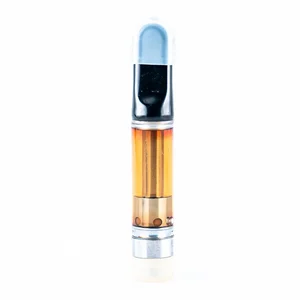Table of Content
- Understanding Chemotherapy-Induced Nausea and Vomiting
- Cannabis-Based Medicines: Types, Composition, and Modes of Administration
- Efficacy and Safety Profile of Cannabis-Based Medicines
- Considerations and Precautions
- Personalized Treatment Approaches and Patient Selection
- Patient Experiences and Perspectives
- Conclusion
- FAQ
Chemotherapy-induced nausea and vomiting (CINV) can be an incredibly distressing and debilitating side effect experienced by individuals undergoing cancer treatment. The relentless waves of nausea can significantly impact a patient’s quality of life and even lead to treatment discontinuation. In the search for effective solutions, cannabis has emerged as a topic of interest in managing chemotherapy-induced nausea. The potential benefits of cannabis for chemotherapy-induced nausea have sparked curiosity and ignited discussions among patients, caregivers, and healthcare providers.
In this article, we will examine the current understanding, research findings, and considerations surrounding the use of cannabis as a potential remedy for chemotherapy-induced nausea, providing you with the essential knowledge you need to navigate this topic.
Understanding Chemotherapy-Induced Nausea and Vomiting
CINV is primarily caused by the administration of chemotherapy drugs, which can trigger a series of physiological reactions in the body. The exact mechanisms behind CINV are complex and multifactorial, involving interactions between neurotransmitters, hormones, and the gastrointestinal system. This intricate interplay leads to the sensation of nausea and the urge to vomit.
It is crucial to highlight the prevalence of CINV and its impact on patient’s quality of life. Studies indicate that approximately 70-80% of cancer patients undergoing chemotherapy experience CINV to varying degrees. This distressing symptom not only affects their physical well-being but also has emotional and psychological consequences. Managing CINV effectively is, therefore, paramount in improving patients’ overall treatment experience.
Currently, there are antiemetic treatments available to alleviate CINV. These include traditional medications such as serotonin receptor antagonists, corticosteroids, and neurokinin-1 receptor antagonists. While these treatments have shown some efficacy, they are not without limitations. Some patients may experience inadequate relief, while others may encounter undesirable side effects. These factors drive the need to explore alternative options, such as cannabis-based medicines, to enhance CINV management.
Cannabis-Based Medicines: Types, Composition, and Modes of Administration
Cannabis-based medicines encompass a range of products derived from the cannabis plant, containing various active compounds, including THC (delta-9-tetrahydrocannabinol) and CBD (cannabidiol). These medicines are available in different forms, such as oral capsules and sublingual sprays, each offering unique advantages and considerations for CINV relief.
The composition of cannabis-based medicines plays a crucial role in their therapeutic effects. THC, known for its psychoactive properties, is believed to possess antiemetic properties that can help alleviate nausea and vomiting. CBD, on the other hand, is non-intoxicating and has shown potential in reducing inflammation and modulating the body’s response to various stimuli. The ratio of THC to CBD in cannabis-based medicines can vary, leading to different therapeutic outcomes.
When it comes to administration, cannabis-based medicines offer various modes of delivery. Oral capsules provide a convenient and discreet option, allowing patients to consume the medicine like any other medication. Sublingual sprays, on the other hand, offer faster onset of action, as the medicine is absorbed directly into the bloodstream through the mucous membranes under the tongue. The choice of administration method can influence the efficacy and how quickly relief can be experienced.
By understanding the different types of cannabis for chemotherapy-induced nausea, their composition, and modes of administration, we can gain valuable insights into how they can potentially provide relief from CINV. In the next sections, we will explore the evidence surrounding their effectiveness, safety considerations, and ongoing research in this field.
Efficacy and Safety Profile of Cannabis-Based Medicines
Reviewing Clinical Studies and Evidence
Numerous clinical studies have investigated the effectiveness of cannabis-based medicines in managing CINV. These studies have shown promising results, indicating that cannabis-based medicines can provide significant relief for patients. By analyzing the data from these studies, we can gain insights into their efficacy and potential benefits.
Potential Side Effects
Like any medication, cannabis-based medicines may come with potential side effects. Some individuals may experience sedation, dizziness, or cognitive effects such as impaired memory or concentration. However, it is important to note that the severity and occurrence of these side effects can vary among individuals. Close monitoring and proper dosage adjustments can help mitigate these effects.
Addressing Concerns
Addressing concerns about addiction, long-term effects, and the risk of psychoactive experiences is crucial in understanding the safety profile of cannabis-based medicines. While cannabis has the potential for dependence, the risk of addiction is relatively low when used for medical purposes under medical supervision. Long-term effects are still being studied, and research suggests that the therapeutic benefits of cannabis-based medicines can outweigh potential risks. Moreover, careful selection of cannabis-based medicines with balanced THC-to-CBD ratios can help minimize psychoactive experiences.
Considerations and Precautions
A. Legal and Regulatory Landscape
The legal status of medical cannabis for CINV relief varies across regions and countries. Some jurisdictions have legalized medical cannabis, allowing patients to access it with proper documentation and authorization. However, it is essential to understand the specific regulations and restrictions in each jurisdiction to ensure compliance. Accessibility may also vary, with some regions having more extensive access to medical cannabis products than others.
B. Drug Interactions and Medical Supervision
Patients undergoing chemotherapy often take multiple medications to manage their condition. It is important to consider potential interactions between cannabis-based medicines and these medications. Some drug combinations may lead to adverse effects or alter the metabolism of either chemotherapy drugs or cannabis-based medicines. Therefore, medical supervision is crucial to ensure proper communication, informed decision-making, and the avoidance of potential drug interactions.
Personalized Treatment Approaches and Patient Selection
Factors to Consider
When considering the use of cannabis-based medicines for CINV relief, several factors should be taken into account. These include the patient’s medical history, current medication regimen, potential risks and benefits, individual preferences, and the severity of CINV symptoms. A personalized treatment approach should consider these factors to determine the most suitable cannabis-based medicine, dosage, and mode of administration for each patient.
Importance of Personalized Treatment Plans
Personalized treatment plans are vital in optimizing the therapeutic outcomes of cannabis-based medicines. By tailoring the treatment approach to each patient’s specific needs, healthcare professionals can maximize the potential benefits while minimizing potential risks. Regular assessments, dosage adjustments, and open communication between patients and healthcare providers contribute to a comprehensive and effective treatment plan.
Patient Experiences and Perspectives
Cancer patients who have turned to cannabis-based medicines for relief from chemotherapy-induced nausea and vomiting (CINV) often have compelling stories to share. Their testimonials and anecdotes shed light on the impact of cannabis-based medicines on their overall well-being and quality of life.
Many patients have reported significant improvements in their CINV symptoms after incorporating cannabis-based medicines into their treatment regimens. They describe experiencing relief from persistent nausea, reduced frequency of vomiting episodes, and an overall improvement in their appetite and ability to maintain proper nutrition during chemotherapy. For some, cannabis-based medicines have been a game-changer, allowing them to endure chemotherapy with greater comfort and a more positive outlook.
Moreover, patients have expressed how cannabis-based medicines have had a broader impact on their well-being beyond just managing CINV. Some patients have reported improvements in their mood, sleep quality, and overall emotional well-being. They have described feeling less anxious, more relaxed, and better able to cope with the challenges associated with their cancer treatment. This holistic improvement in their quality of life has been a welcomed outcome for many patients.
It’s important to note that patient experiences with cannabis-based medicines can vary. While some patients have found significant relief, others may have had a more modest response or encountered challenges with finding the right dosage or formulation that works best for them. Each individual’s response to cannabis-based medicines can be influenced by factors such as their unique physiology, underlying health conditions, and individual preferences.
It is crucial to highlight that patient experiences and perspectives should be considered alongside scientific evidence and medical guidance. While patient testimonials provide valuable insights, they should not replace the advice and expertise of healthcare professionals. Open communication between patients and their healthcare providers is key to ensuring the safe and effective use of cannabis-based medicines for CINV relief.
Conclusion
Chemotherapy-induced nausea and vomiting (CINV) can significantly impact the quality of life of cancer patients undergoing treatment. While traditional antiemetic medications have been the mainstay for managing CINV, there is growing interest in the potential of cannabis-based medicines as an alternative approach.
Cannabis-based medicines hold promise as a promising approach to managing CINV in cancer patients. By integrating scientific evidence, patient perspectives, and medical guidance, we can strive to optimize CINV management, enhance patient well-being, and improve the overall treatment experience for individuals undergoing chemotherapy.
FAQs
What is the best cannabis product for chemo nausea?
When it comes to choosing the best cannabis product for chemo nausea, it is essential to consider individual preferences and medical guidance. Oral capsules and sublingual sprays are commonly used options, but the ideal product may vary depending on factors such as the desired onset of action and personal tolerance.
Can cannabinoids help with chemotherapy-induced nausea and vomiting?
Yes, cannabinoids have shown promise in helping with chemotherapy-induced nausea and vomiting. THC, in particular, has demonstrated antiemetic properties that can alleviate these symptoms. However, it is important to consult with a healthcare professional to determine the most appropriate cannabinoid-based treatment approach.
Is cannabis used successfully to ward off nausea associated with chemotherapy?
Many cancer patients have reported successful use of cannabis to ward off nausea associated with chemotherapy. Cannabis-based medicines, with their potential antiemetic effects, can provide relief and improve overall well-being. However, the efficacy may vary among individuals, and it is important to consider personalized treatment plans and medical supervision.
Does CBN help with nausea?
CBN (cannabinol) is a cannabinoid found in cannabis that has shown potential in alleviating nausea. While research specifically on CBN’s antiemetic properties is limited, it may contribute to the overall therapeutic effects of cannabis-based medicines in managing nausea. Further studies are needed to fully understand its role and effectiveness.
How do you stop nausea from chemo fast?
Stopping nausea from chemotherapy quickly can be challenging, but there are strategies that may help. Antiemetic medications prescribed by healthcare professionals can provide relief. Additionally, some patients have found cannabis-based medicines to be effective. It is important to discuss options with a healthcare provider for personalized guidance and recommendations tailored to individual needs.







